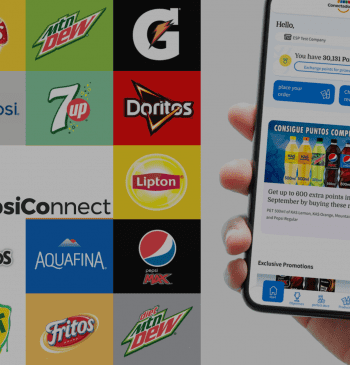24 Mar

The game of sales is trickier than it has ever been. Particularly after COVID-19 hit the world in 2020, B2B loyalty and marketing strategies have evolved. The primary aim is to get ahead of the competition to earn loyalty and survive. Coming up with fresh strategies is, therefore, even more important. Account-based marketing is one of the strategies B2Bs incorporate to stay in the game. We wanted to give you a broader perspective on this strategy. So, in this article, you will read about account-based marketing for B2B: what is it, and is it right for your B2B? Account-based marketing for B2B is a crucial strategy that you should consider for the coming periods.
What is account-based marketing for B2B?
Account-based marketing (ABM) for B2B is a strategic marketing approach where an organization treats each target account as a market of one. This approach is particularly useful in B2B, where sales cycles are longer and purchasing decisions are often complex. Here’s a breakdown of its key elements:
- Targeted Account Selection: Instead of casting a wide net, ABM focuses on a carefully selected list of accounts deemed most valuable to the business. These accounts are usually high-value clients or prospects with a high revenue growth potential.
- Personalized Marketing Campaigns: ABM involves creating highly customized marketing campaigns tailored to each target account’s needs, challenges, and business context. This personalization extends across various channels – email, social media, events, and content marketing.
- Alignment of Sales and Marketing: One of the critical elements of ABM is the close alignment between the sales and marketing teams. Both teams work together to identify target accounts, develop personalized strategies, and engage with prospects at various sales funnel stages.
- Customized Content and Messaging: In ABM, the content and messaging are customized to resonate with each target account’s interests and pain points. This might involve creating industry-specific reports, tailored solution guides, or personalized video messages.
- Use of Account Insights: ABM relies heavily on gathering and utilizing insights about target accounts. This includes understanding the decision-making process within the organization, identifying key stakeholders, and staying informed about any changes in the company’s structure or strategy that might impact the purchasing decision.
- Multi-channel Engagement: ABM’s strategies often include online and offline tactics. The goal is to interact with the target account through various touchpoints, building relationships and establishing trust over time.
- Measurement and Optimization: ABM strategies are continuously measured and optimized. This involves tracking key metrics like account engagement, pipeline growth, and revenue influence. The insights gained are used to refine the approach for each account and improve the overall strategy.
ABM is effective in B2B contexts due to its tailored approach. By focusing resources on a select group of high-value accounts and engaging them with personalized content and interactions, businesses can increase their chances of closing larger deals and building long-term profitable relationships.
Benefits of ABM
Account-based marketing offers several key benefits, particularly in the B2B sector, making it an increasingly popular strategy among businesses. These benefits include:
- Increased ROI: ABM is often more cost-effective compared to traditional marketing strategies. Companies often see a higher return on investment by focusing resources on a smaller number of high-value accounts and tailoring the marketing efforts to these specific targets.
- Enhanced Customer Experience: Personalized marketing approaches used in ABM provide a more relevant and engaging experience for potential clients. This tailored approach can lead to better customer satisfaction and loyalty.
- Shorter Sales Cycles: Since ABM targets accounts more likely to buy and involve personalized communication, it can help reduce the sales cycle length. The sales team can engage more directly and meaningfully with the prospects, promptly addressing their needs and concerns.
- Better Alignment of Sales and Marketing: ABM requires close collaboration between sales and marketing teams, leading to better alignment in their goals and strategies.
- Higher Quality Leads: ABM’s targeted approach means that the leads generated are usually of higher quality. These leads are more likely to align with the company’s ideal customer profile, which can increase the likelihood of conversion.
- Efficient Use of Resources: Companies can allocate their resources more efficiently by focusing on fewer, more qualified leads. Marketing efforts aren’t wasted on broad segments less likely to convert, allowing for more effective use of budget and workforce.
- Improved Tracking and Measurement: ABM allows for more accurate tracking and measurement of marketing efforts. Companies can more easily track the impact of their marketing activities on specific accounts.
- Clearer Focus and Prioritization: ABM focuses on marketing and sales efforts, helping teams prioritize and target their efforts more effectively.
Overall, ABM’s targeted, personalized approach can lead to more efficient and effective marketing and sales processes, fostering stronger customer relationships and driving significant business growth.
Why is it different?
In account-based marketing, you won’t enthrall any nearby cardinals by your free seed buffet. Instead, you concentrate on a group of birds (some cardinals, robins, and bluejays) congregating in the same grove of trees. To put it plainly, account-based marketing is not about personas per se. It is about companies.
You upload a list of clients you’d like to have with the help of an account-based marketing program. The system then locates all applicable birds employed by that company, such as advertisers, IT professionals, and vice presidents, as appropriate. You’re reaching out to many people at the right company. But that isn’t the true brilliance of it.
Remember to make it relevant
Account-based marketing is unquestionably effective because it allows you to promote to specific businesses rather than wasting time and money on unqualified or unwanted prospects. How often do people request a white paper or register for a webinar even though they have no intention of purchasing the product or service? It happens all the time. Account-based marketing helps to mitigate some of this waste.
B2B account-based marketing helps you hit the target
B2B account-based marketing calls for specifics. The more specific and relevant you are, the better leads and outcomes you will have. You can customize your strategies by using the right account-based marketing for B2Bs. Social ads, email communications, website landing pages, display ads, official statements, and direct communications can be tailor-made.
Imagine there is a company that you want to work with. You could not only reach all of the right people in whatever division of the company you’re targeting with account-based marketing, but you could also customize all of the banner ads, social ads, landing pages, and everything else to talk about that company and its particular pain points. This customization has traditionally been done by the best salespeople on the phone, in meetings, and when preparing proposals. ABM enables advertisers to act like great salespeople, resulting in higher conversion rates and less waste.
Sales and marketing alignment in B2B account-based marketing
Account-based marketing is one of the best strategies for bringing all teams together.
For decades, marketing teams have been developing campaigns to attract new leads so sales reps can sift through the clutter and find a few leads who might buy. The goal of ABM is to close a single account, which means all teams focus on the same business goal. It’s the same lead that both teams are chasing when a new lead from your target account comes in. As a result, sales reps spend more time cultivating qualified, targeted leads than following up on unqualified leads. It’s so successful that 80 percent of advertisers who use an ABM program say they’re “slightly too closely” aligned with sales.
Best Examples Of ABM
Numerous businesses across different industries have successfully implemented ABM. Here are some examples illustrating how ABM can be applied:
| Strategy | Description | |
|---|---|---|
| 1 | Customized Web Experiences | Creating personalized landing pages for key accounts with industry-specific content. |
| 2 | Targeted Email Campaigns | Developing email campaigns designed for individual accounts addressing their unique pain points. |
| 3 | Personalized Direct Mail | Sending personalized gifts or collateral to key decision-makers in target accounts. |
| 4 | Bespoke Events | Hosting exclusive events such as webinars or workshops tailored for specific accounts. |
| 5 | Social Media Targeting | Using platforms like LinkedIn for targeted ads and content to key stakeholders in chosen accounts. |
| 6 | Account-Specific Content Creation | Creating whitepapers or blog posts tailored to the needs and interests of a target account. |
| 7 | Strategic Partnerships for Account Penetration | Partnering with other companies or influencers to co-create content or events for target accounts. |
| 8 | Highly Targeted Advertising | Targeting specific companies or job roles within them using programmatic advertising. |
| 9 | One-to-One Sales Outreach | Direct outreach by sales reps to key stakeholders in target accounts with personalized messages. |
| 10 | Customer Advocacy Programs | Using existing customers for testimonials or referrals to build trust with target accounts. |
How to Implement Account-Based Marketing
In the B2B marketing world, implementing ABM involves several key steps that will help you to reach success:
- Identify Target Accounts: Analyze your market and identify high-value accounts that align well with your product or service.
- Gather Account Insights: Research these accounts thoroughly to understand their business needs, challenges, and decision-making processes.
- Align Sales and Marketing: Ensure your sales and marketing teams work closely together. This alignment is crucial for creating a unified strategy for each account.
- Create Personalized Content and Campaigns: Develop tailored marketing content and campaigns that resonate with each target account’s specific needs and interests.
- Choose the Right Channels: Select the most effective channels to reach your target accounts, whether through social media, email, direct mail, or other mediums.
- Engage and Nurture: Implement your strategies to engage with the stakeholders of these accounts. This might include personalized communications, bespoke events, or direct outreach.
- Measure and Optimize: Continuously measure the results of your ABM efforts and use this data to refine and improve your strategies.
By following these steps, you can effectively implement an ABM strategy that focuses on building strong, personalized relationships with key accounts, ultimately driving growth and revenue for your business.
Is account-based marketing for B2B right for you?
Targeting a specific company, working on customized communication, and reaching out to your clientele helps you improve your visibility. Remember that in these times, it is even more important to be memorable and build rapport with your clients. Account-based marketing for B2B is beneficial in that regard.
There are various platforms where you can get professional account-based marketing for B2B. If you need this marketing strategy implemented, Apex Loyalty offers numerous packages. Customizing strategies for your company and your audience, Apex can give the right account-based marketing for B2B.
You can read our previous article from https://www.apexloyalty.com/customer-loyalty-marketing/







